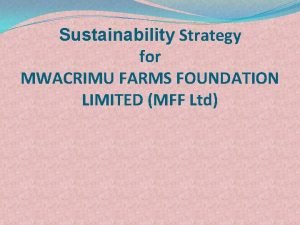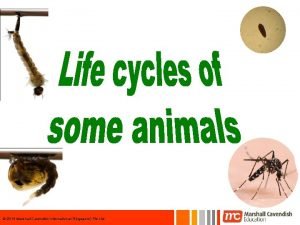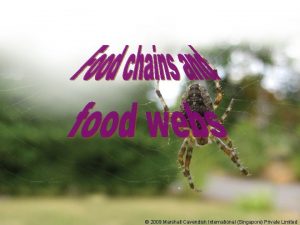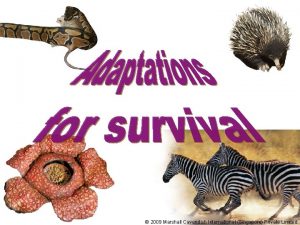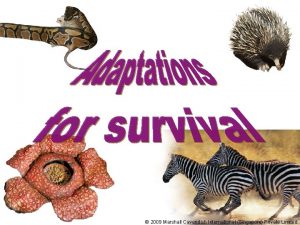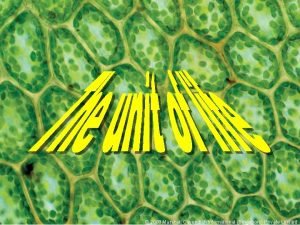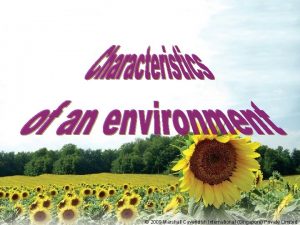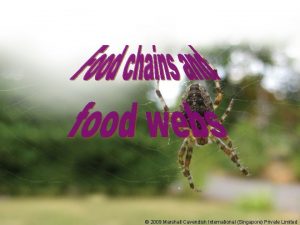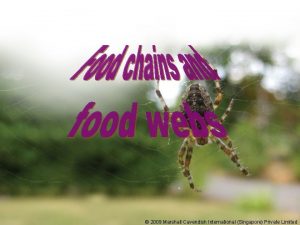2014 Marshall Cavendish International Singapore Pte Ltd Questions

















- Slides: 17

© 2014 Marshall Cavendish International (Singapore) Pte Ltd

Questions to think about… How are plants classified? How are plants similar or different? Where can we find plants? What are plants? © 2014 Marshall Cavendish International (Singapore) Pte Ltd Why are plants important?

What are plants? • Plants are living things. • They need air, food and water to stay alive. • They can make their own food. Plants come in different shapes, sizes and colours. There are more than 350 000 kinds of plants! © 2014 Marshall Cavendish International (Singapore) Pte Ltd

Where can we find plants? • Plants are found in many places: – on the ground – on buildings – on other plants – on rocks – in water Ferns growing on a tree Moss growing on a rock Plant growing in water © 2014 Marshall Cavendish International (Singapore) Pte Ltd

How are plants classified? There is a great diversity of plants around us. Can you think of some ways to classify plants? © 2014 Marshall Cavendish International (Singapore) Pte Ltd

How are plants classified? Flowering • Plants which produce flowers. • E. g. orchids Plants Nonflowering • Plants which do not produce flowers. • E. g. ferns, mosses © 2014 Marshall Cavendish International (Singapore) Pte Ltd

Flowering plants • The adult plants of flowering plants produce flowers. • They produce flowers when the conditions are right. • Flowering plants produce fruits. © 2014 Marshall Cavendish International (Singapore) Pte Ltd

Non-flowering plants • Plants which do not produce flowers are called nonflowering plants. Mosses and ferns are nonflowering plants. Moss on a rock A fern © 2014 Marshall Cavendish International (Singapore) Pte Ltd

How are plants similar or different? • The diagram shows the different parts of a flowering plant. • These parts may look similar or different in leaf different plants. flower roots © 2014 Marshall Cavendish International (Singapore) Pte Ltd fruit stem

How are plants similar or different? • Roots – Usually found underground – However, some plants have roots above the ground. Mangrove trees have roots above the ground. © 2014 Marshall Cavendish International (Singapore) Pte Ltd

How are plants similar or different? • Stems – Usually found above ground – However, some stems of plants are found underground. stem © 2014 Marshall Cavendish International (Singapore) Pte Ltd

How are plants similar or different? • Leaves – Leaves come in different shapes, sizes and colours. © 2014 Marshall Cavendish International (Singapore) Pte Ltd

How are plants similar or different? • Flowers – Flowers of different plants have different sizes, shapes and colours. © 2014 Marshall Cavendish International (Singapore) Pte Ltd

How are plants similar or different? • Fruits – Only flowering plants bear fruits. – Fruits come in many different sizes, shapes and colours and tastes. – Some fruits are edible while others are not. © 2014 Marshall Cavendish International (Singapore) Pte Ltd

Why are plants important? • • Plants are important for the survival of living things. Plants make their own food. Animals depend on plants for food. It is important to conserve and maintain the diversity of plants so that living things can survive. © 2014 Marshall Cavendish International (Singapore) Pte Ltd

© 2014 Marshall Cavendish International (Singapore) Pte Ltd

© 2014 Marshall Cavendish International (Singapore) Pte Ltd
 Mconline.sg
Mconline.sg 2009 marshall cavendish international
2009 marshall cavendish international 2009 marshall cavendish international
2009 marshall cavendish international Dintec
Dintec Champ electronics
Champ electronics Kbm singapore pte ltd
Kbm singapore pte ltd Grk engineering
Grk engineering Dawning information industry co
Dawning information industry co Kbm singapore pte ltd
Kbm singapore pte ltd Kbm singapore pte ltd
Kbm singapore pte ltd Kbm singapore pte ltd
Kbm singapore pte ltd Marshall cavendish
Marshall cavendish Mff international pte ltd
Mff international pte ltd Us group consolidator inc
Us group consolidator inc Novel sunkris
Novel sunkris Goodhill korea centre pte ltd
Goodhill korea centre pte ltd Learner champ education group pte ltd
Learner champ education group pte ltd Apollo crew management india private ltd
Apollo crew management india private ltd












